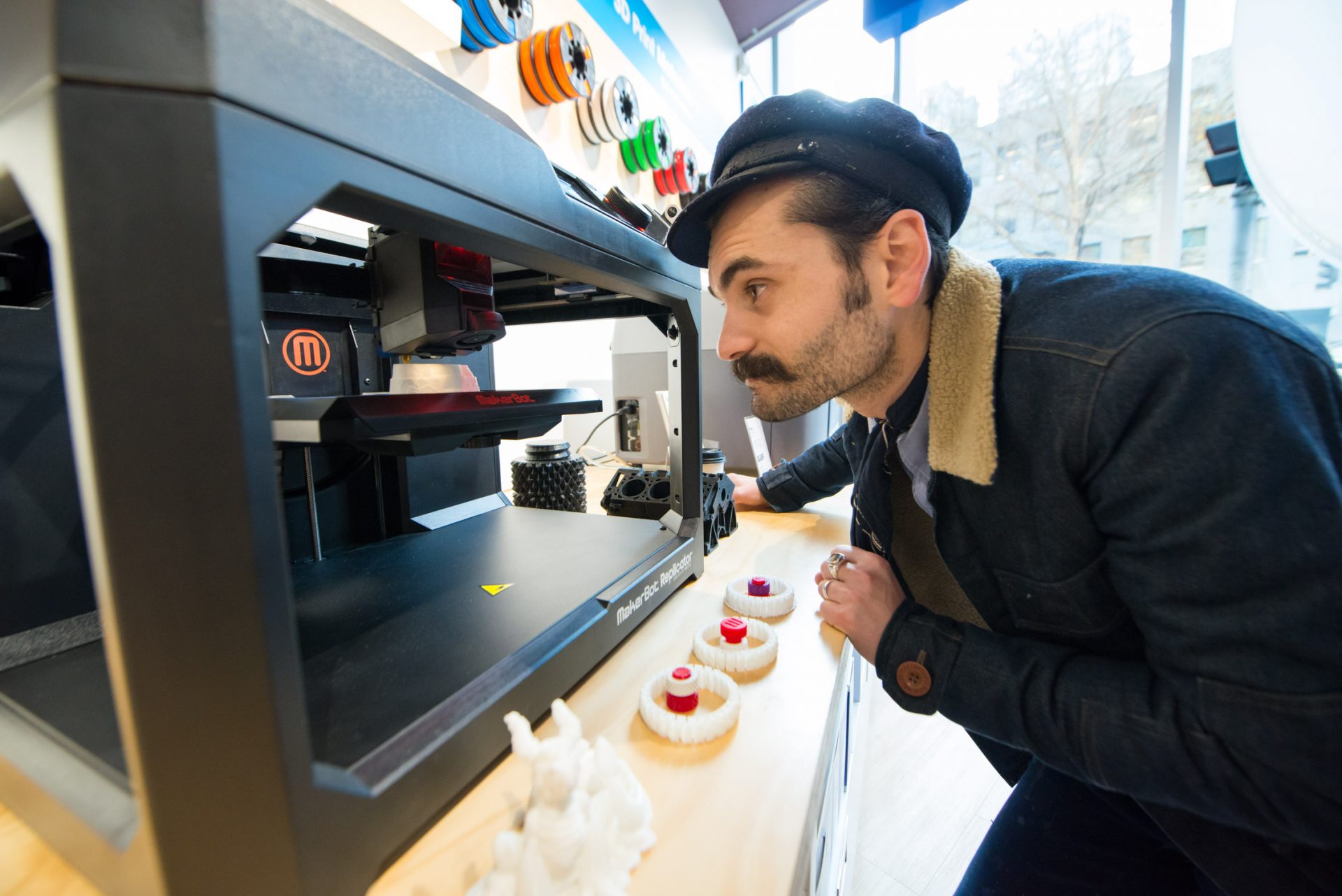For your next university assignment, why not go 3D?
BRINGING a project idea on paper to life is now easier than ever, with the increasing accessibility of 3D printing technology. Lunnie Gan delves into the nuts and bolts of 3D printing and offers up some ideas that might come in handy for your next university assignment.
3D printing describes the process of creating solid three-dimensional objects, one layer of material after another, from a single digital file.
To start, you could create an entirely original object with a 3D modelling program, download a modifiable 3D template from online sites or even use a 3D scanner to take millions of measurements of something in the real world.
It’s a technology being increasingly used not just by businesses, but students as well, especially in the fields of architecture, engineering, design and fashion.
In June last year, Officeworks opened a 3D Experience Centre at its Russell St store in Melbourne – the first of its kind for any major retailer in Australia.
According to the store, the main users are local businesses and students in and around the CBD, and is a reflection of how advancements in 3D technology have transformed the way certain industries work, and have made its way into school and university curriculums.
The centre is particularly popular with students from design-led tertiary courses such as fashion, engineering, architecture and art, given the modelling and product development coursework requirements.
So what can you do with 3D printing?
1. Architecture
If you’re an architecture student, you’re in luck. The endless possibilities that 3D printing brings will ignite your imagination and empower you to transform your designs into real physical objects.
You can materialise your design ideas in minutes, saving long hours of bending over your desk to create your model and giving you full visualisations of your end projects. From printing a scaled model Stockholm to printing artificial icebergs, a 3D printer can do it all.
2. Engineering
Puzzling over two-dimensional textbook drawings of dynamic components? Worrying about creating miniature prototypes of rockets?
Discover a new dimension with 3D printers by creating the actual parts of a dynamic mechanism, and build a moving part of a robot without any welding.
3. Fashion
Common complaints we hear from student fashion designers: Factories have huge minimum orders! Prototyping of fashion products is hard!
3D printing may be an excellent solution to these problems as rapid prototyping eliminates costly design alterations cost and reduces the time taken to make sample fashion pieces.
4. History
Ever imagined seeing an 8-foot-tall, 3D printed model of Bigfoot’s skeleton? Or wished to see a scale accurate 3D model of China’s entire Forbidden City from the Ming Dynasty?
With the 3D printer, replicas of fossils and ancient artefacts that used to be only available in museums can be recreated in real life.
From “printing” dinosaur bones to Egyptian tombs, the ability to relate to historical tangible items allows students to explore the past in a more concrete way, making history lessons much more interesting.
5. Science
The days when you had a difficult time envisioning equations on paper or visualising complex molecules are over.
Using 3D printing, students in science courses can easily print out life-sized models of human cells and organs, models of molecules or even complicated mathematical models.
Examining cross-sectional areas of these 3D printed replicas will definitely bring a “cool factor” into the classroom and reignite interest in science courses.
Want to Know More?
If you’re a student studying in and around the Melbourne CBD and interested in giving 3D printing a try, the nearest service you can access is the 3D Experience Centre at the Officeworks Russel St store, and you can use the technology in a few different ways:
- You can open your own 3D file in-store and create a three dimensional object or model using a variety of printing technologies and materials. If you have a specific design, it can be printed.
- You can also use the 3D printing services to scan an existing product or purchase a pre-printed 3D product.
You don’t have to book a machine in advance to use it – but if you’re looking to use the service for coursework which includes a 3D printing element, it might be a good idea to plan ahead. Pop by the store to discuss your idea with the centre’s staff and get some advice on how best to approach the project at hand, including the most appropriate material to use based on scale, function, printing timeframes and of course, budget.
Some of the materials you could use include:
- Paper – glued together and cut with a computer controlled knife. The colour is printed onto the paper before it is cut, resulting in a full colour print
- Gypsum Powder – binding agent and ink is printed layer by layer into the gypsum powder. This is a full colour print option with great print detail and is more fragile than paper
- ABS plastic – This is a strong and hard plastic which is very durable and comes in variety of colours
- PLA plastic – also available in a wide variety of colours and is good for printing large, chunky models. PLA is a cheaper option to ABS
- Resin – the most expensive of the materials is strong, ridged and provides great detail, made from liquid photopolymer cured with UV light
More information about 3D printing services is available via the Officeworks website.







